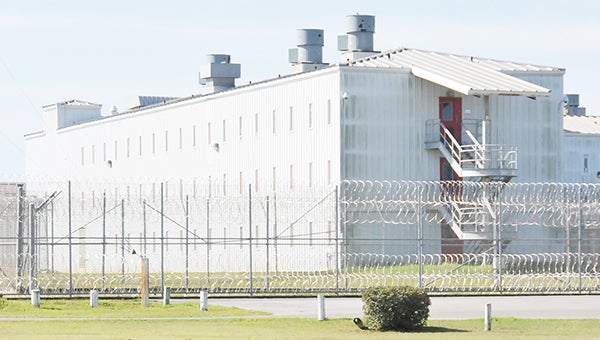ADOC closing, decommissioning main facility at Holman
Published 11:15 am Wednesday, January 29, 2020

- Shown is a William C. Holman Correctional Facility dormitory. | Andrew Garner/Atmore Advance
|
Getting your Trinity Audio player ready...
|
Plate factory, clothing, E-dorm and restrictive units to remain open
Alabama Department of Corrections (ADOC) Commissioner Jeff Dunn announced today that accelerated plans that were initiated in August 2018 to close and decommission the main facility at William C. Holman Correctional Facility are taking place.
Dunn said in a release that this measure is being executed to ensure the ongoing safety and security of correctional staff, inmates and the public.
The decision to accelerate the existing plan was made swiftly and strategically by ADOC’s executive leadership upon learning of the daily interventions required to maintain deteriorating underground utility systems, which provide essential power, water and sewer services, in order to keep the main facility operational, the release said.
“Since my arrival at the ADOC almost five years ago, this Department has been vocal about the pervasive and extreme dilapidation crippling facilities throughout the correctional system – and Holman Correctional Facility is no exception,” Dunn said in a release. “This is a real and serious issue that cannot be understated and, after learning the extent of the risks associated with continued maintenance attempts at Holman Correctional Facility, moving quickly on our plans to decommission was the right and only decision.”
The ADOC monitors and performs risk analyses of its aging facilities in an effort to maintain critical systems across the correctional system. The current conditions within the Holman Correctional Facility tunnel, in which the main facility’s electrical, water and sewer control systems are housed, now present increased safety concerns and a degree of risk to anyone who enters the tunnel, ultimately rendering ongoing maintenance or repair of these systems unsustainable, the release said.
“Protecting inmates, staff, and the general public is of paramount importance to the ADOC, and the 51-year-old Holman facility simply is no longer viable to house a large population of inmates,” added Dunn. “Band-aid solutions to any problem of this magnitude are temporary at best and cannot fix the root cause of our collective problem – Alabama’s prison infrastructure is failing. We are now projecting upwards of $800 million in deferred maintenance costs alone. This unavoidable issue reinforces the critical importance of Gov. (Kay) Ivey’s transformative and necessary plan to build three new correctional facilities.”
The main facility at Holman Correctional Facility houses general population and death row inmates, the cafeteria, the medical unit, the administrative suite and the execution chamber, which is the only component of the main facility that will remain in use. Executions will not be affected, and the ADOC will take all necessary measures and precautions to maintain the integrity and safety of the chamber and its access points. At present, the department is working with third-party experts to accomplish the endeavor.
Upon completion of the decommissioning process, approximately 422 general population inmates and 195 restrictive housing inmates will be relocated to other ADOC facilities, according to the release. Approximately 150 of Holman Correctional Facility’s low-risk inmates serving life without parole sentences will be moved to the facility’s standalone E-dorm (formerly the faith-based dormitory) and continue to work at the prison’s tag and clothing plants. Holman Correctional Facility’s restrictive housing unit will be modified to house and serve the facility’s current 145 death row inmates, as well as 21 additional death row inmates who already have been transferred safely from Donaldson Correctional Facility as part of Phase 1 of this process. The restrictive housing unit, E-dorm, and the tag and clothing plants all have independent power, water and sewage systems.
The exact details and timing of Phase 2, which encompasses the transfer of Holman Correctional Facility’s general and restrictive housing populations, will not be made public in advance for security purposes, the ADOC said.
The process by which inmates are transferred is routine, and the department will work diligently to minimize disruption.
“We currently are working hard to identify and implement measures to account for the impact of increased populations across the correctional system, and to ensure continued access to health, educational, and rehabilitative services and programs for our inmate population,” Dunn said. “We will be making appropriate modifications to existing facilities to address concerns associated with relocation including safety, security, staffing, crowding and programming. This is a complex process, and my Department is committed to maintaining transparency without compromising inmate, staff, or public safety.”
The ADOC anticipates retaining enough security and support personnel to staff the active areas at or near 100 percent, establishing a replicable management and rehabilitative model for other facilities as new security staff continues to be added across the correctional system. Staff currently working at Holman Correctional Facility not assigned to active areas within the facility will be reassigned to nearby correctional facilities based on the needs of the Department. Health, rehabilitative, and food services will be provided to Holman Correctional Facility from Fountain Correctional Facility, which is located approximately one mile from Holman.
This story will be updated.




